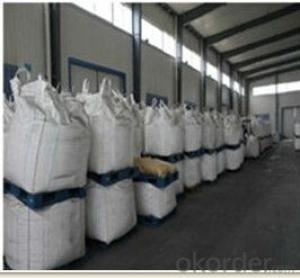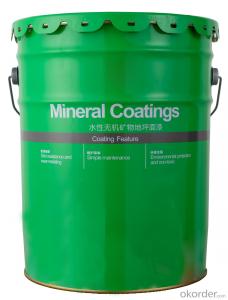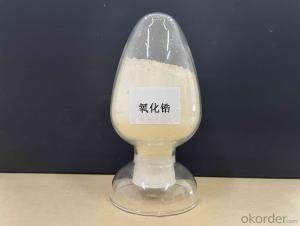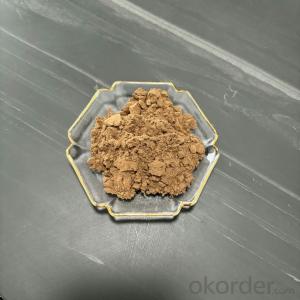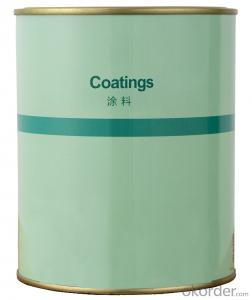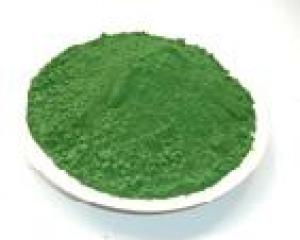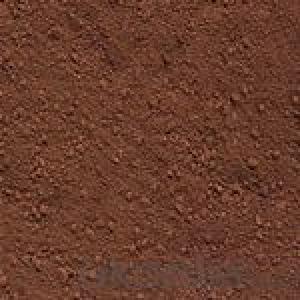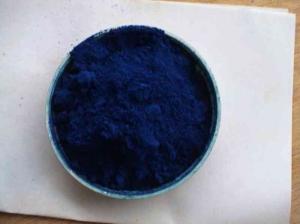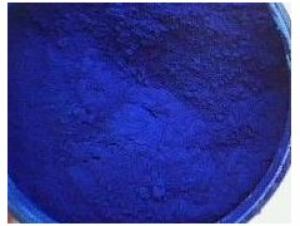Textile chemicals sodium alginate Chemical Auxiliary Agent
- Loading Port:
- Shanghai
- Payment Terms:
- TT OR LC
- Min Order Qty:
- 1 bottle
- Supply Capability:
- 10000 bottle/month
OKorder Service Pledge
OKorder Financial Service
You Might Also Like
Quick Details
| Classification: | Chemical Auxiliary Agent | CAS No.: | 9005-38-3 | Other Names: | Alginic Acid Sodium Salt |
| MF: | C5H7O4COONa | Purity: | 89% | Place of Origin: | Shandong China (Mainland) |
| Type: | Activated Carbon | Usage: | Textile Auxiliary Agents | Brand Name: | xinruitai |
| Model Number: | cp001 | Color: | brown or Yellowish | Application: | Textile Auxiliary Agent |
| Grade Specification: | Printing Paste | Dye: | Activated Dyes | PH Value: | 6.5-7.5 |
| Ca Content %: | 3% max |
Packaging & Delivery
| Packaging Detail: | 25kgs per bag |
| Delivery Detail: | 2 weeks |
Specifications
have stock
seaweed smell
different viscosity
different mesh
Textile chemicals sodium alginate
Printing paste: Sodium Alginate is an ideal printing paste. It is yellowish powder. It contains positive charge,
which has mutual repulsion with electro positivity contained in reactive dyestuffs, yet it won't be covalent
bonding with reactive dyestuff, and that makes dyestuffs stick to paste.
*Sodium Alginate is widely applied to different kinds of textile printing, such as cotton, linen, silk and synthetic
fibre.It makes printing textile to attain bright colors, sharp definition and good color yield, high color fixing and
soft hand feeling.Liquid mixture with Sodium Alginate has good plasticity and flexibility. Owing to its perfect
effect on textile printing and low cost, Sodium Alginate is popular in application.
- Q:i also need the color they are links would be great if you know a good one
- If you want to physically separate the different pigments, you can use a method called paper chromatography. The chlorophyll is dissolved in a certain solute and is allowed to move through a piece of paper. The different pigments will move at different speeds and they will be separated. But if you simply want to identify the different pigments, you can use another method called spectrophotometry. Different chlorophyll pigments absorb photons of different wavelength. In diethylether, chlorophyll a has approximate absorbance maxima of 430 nm and 662 nm, while chlorophyll b has approximate maxima of 453 nm and 642 nm. So that's how you distinguish between the two.
- Q:What pigments take part in photosynthesis?
- There are three basic classes of pigments. Chlorophylls are greenish pigments which contain a porphyrin ring. This is a stable ring-shaped molecule around which electrons are free to migrate. Because the electrons move freely, the ring has the potential to gain or lose electrons easily, and thus the potential to provide energized electrons to other molecules. This is the fundamental process by which chlorophyll captures the energy of sunlight. There are several kinds of chlorophyll, the most important being chlorophyll a. This is the molecule which makes photosynthesis possible, by passing its energized electrons on to molecules which will manufacture sugars. All plants, algae, and cyanobacteria which photosynthesize contain chlorophyll a. A second kind of chlorophyll is chlorophyll b, which occurs only in green algae and in the plants. A third form of chlorophyll which is common is (not surprisingly) called chlorophyll c, and is found only in the photosynthetic members of the Chromista as well as the dinoflagellates. The differences between the chlorophylls of these major groups was one of the first clues that they were not as closely related as previously thought.....
- Q:why do plants need more than one pigment for light absorption?
- Pigments are molecules with an array of covalent bonds capable of absorbing a photon of light that has only a certain wavelength. The absorbed wavelength is only a fraction of the continuous range of wavelengths reaching the reaction center of a chloroplast. Each pigment species absorbs a different portion of the spectrum. So most photosynthesis works in combinations of pigments to absorb a across the visible spectrum and somewhat beyond. Some pigments (accessory photosynthesis carotenoid pigments) absorb useful wavelengths to pass the energy to chlorophyll A while the Xanthophyll Cycle pigments absorb potentially harmful high energy wavelengths for dissipation. Accessory pigments provide a range of spectra collection that allowed plants to adapt successfully to environments of differing light conditions. Pigments provide coloration to signal flower or fruit maturity to pollination partners or seed dispersal partners. Anthocyanins and carotenoids perform these communication functions. Phytochrome is a pigment that absorbs one wavelength only to toggle to another shape capable of absorbing at a different wavelength. Algae and plants both use this system to inform them of the time of year so they can synchronize with the best season in their habitat for reproduction efforts to succeed. Plants use phytochrome to regulate the photoperiod of flowering or seed germination.
- Q:is it the ink on regular printers?
- Some printers use only pigmented ink. Others use dye based and then some use a combination of both. Dye based ink is basically water based with a dye added to it. Pigmented ink has a solvent base with dye added. Pigment ink and dye based ink have both advantages and disadvantages. Dye based ink have better colors but pigment are more water and fade resistant. Dye based inks are therefore better for photos. I have a printer that has 4 dye based inks and a black pigment ink. Mine uses the dye based black and colours for pictures and the pigmented black is used for text. So the answer is yes. Pigmented ink is used in some regular printers.
- Q:Please and thank you, it doesn't say so on the website.
- Mac Pigment Ingredients
- Q:light absorption, which pigments are involved?
- All photosynthetic organisms contain one or more organic pigments capable of absorbing visible radiation, which will initiate the photochemical reactions of photosynthesis. The three major classes of pigments found in plants and algae are the chlorophylls, the carotenoids and the phycobilins. Carotenoids and phycobilins are called accessory pigments since the quanta (packets of light) absorbed by these pigments can be transferred to chlorophyll. Chlorophylls chlorophyll a - present in all higher plants and algae chlorophyll b - present in all higher plants and green algae chlorophyll c - diatoms and brown algae chlorophyll d - red algae (chlorophyll a is present in all photosynthetic organisms that evolve O2.) Chlorophyll molecules contain a porphyrin 'head' and a phytol 'tail'. The polar (water-soluble) head is made up of a tetrapyrrole ring and a magnesium ion complexed with the nitrogen atoms of the ring. The phytol tail extends into the lipid layer of the thylakoid membrane. Carotenoids (carotenes and xanthophylls) Carotenes: -carotene - higher plants and most algae $-carotene - most plants some algae xanthophylls: luteol, fucoxanthol and violaxanthol Carotenoids contain a conjugated double bond system of the polyene type (C-C=C-C=C). Energy absorbed by carotenoids may be transferred to chlorophyll a for photosynthesis. Phycobilins (found mostly in red and blur-green algae): phycoerythrin phycocyanin allophycocyanin )
- Q:Are carontenoids and anythocyanin accesory pigments.
- Accessory pigments are those , that can not do photosynthesis and manufacture sugar as essential pigment chlorophyll does. But these accessory pigments capture solar energy in the form of photons and then transfer it to chlorophyll molecules / pigments . Thus increasing the power of chlorophyll to do photosynthesis . carontenoids and anythocyanin are accesory pigments. click on the links below to learn more about the accessory pigments - en.wikipedia.org/wiki/Accessory_p... www.ucmp.berkeley.edu/glossary/gl... www.cas.muohio.edu/~meicenrd/BMZ1... Thank you !
- Q:Explain why plants need a variety of pigments to carry out photosynthesis?
- Each pigment in the leaf absorbs only a very narrow range of wavelength. In order to make use of more light than one specific wavelength, then plants have several different pigments. Chlorophyll A and Chlorophyll B intercept wavelengths from roughly 400-500 nm and then again from 650-700 nm. There are several different carotenoid pigments, each intercepting a pretty specific wavelength. I think these are within 450 - 510 nm. You have a high rate of photosynthesis in the blue range and then again in the red range. (I wasn't able to find a very good image that explains this clearly, but the sources listed below do a decent enough job.) Green light and most of the yellows will be reflected and not used by the plant. Keep in mind that while phytochrome is a pigment, it is not involved in photosynthesis.
- Q:i love makeup so mucch im like addicted...lol but the only thing is that i only buy that department or drug store brands cause i cannot afford high quality brands. the one that i buy are good for me,,but anyways i was wondering what the heck is mac eyepigment,,what is the diffrence between eyeshow and pigment? pleas help thank u,,,oh yeah and what does it look,like on the eyes?
- a mac pigment is a highly concentrated loose eyeshadow just a little will give u alot of color as opposed to a regular eyeshadow which isn't as vibrant or pigmented to give you a visual, you know when you put on eyeshadow, you have to apply it a few times to see some decent color? .. with mac pigments its so concentrated that in the first stroke you can see the colour as it is in the pot. you can even use it as eyeliner
- Q:Why is it important for a plant to have more pigments than just chlorophyll?
- if the plant has more than one color of pigments, it can absorb more spectrums of the visible scale and create food longer, therefore surviving longer
1. Manufacturer Overview |
|
|---|---|
| Location | |
| Year Established | |
| Annual Output Value | |
| Main Markets | |
| Company Certifications | |
2. Manufacturer Certificates |
|
|---|---|
| a) Certification Name | |
| Range | |
| Reference | |
| Validity Period | |
3. Manufacturer Capability |
|
|---|---|
| a)Trade Capacity | |
| Nearest Port | |
| Export Percentage | |
| No.of Employees in Trade Department | |
| Language Spoken: | |
| b)Factory Information | |
| Factory Size: | |
| No. of Production Lines | |
| Contract Manufacturing | |
| Product Price Range | |
Send your message to us
Textile chemicals sodium alginate Chemical Auxiliary Agent
- Loading Port:
- Shanghai
- Payment Terms:
- TT OR LC
- Min Order Qty:
- 1 bottle
- Supply Capability:
- 10000 bottle/month
OKorder Service Pledge
OKorder Financial Service
Similar products
New products
Hot products
Related keywords
